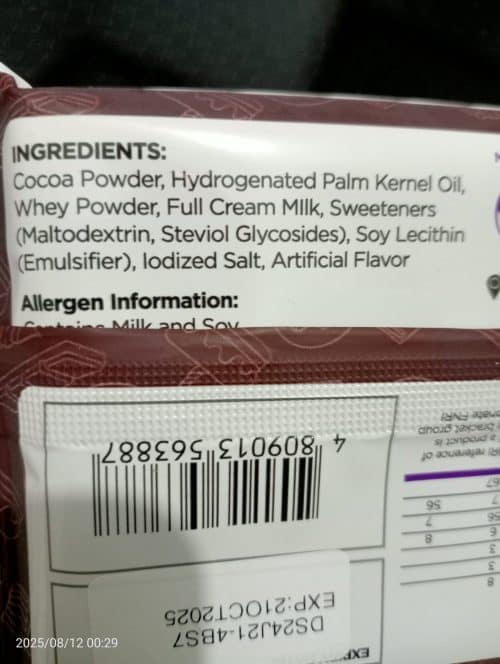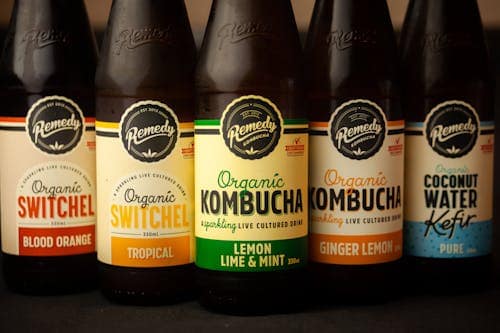Natural ingredients are substances sourced directly from plants, minerals, or animals that have undergone minimal processing. Choosing natural ingredients helps reduce exposure to potentially harmful synthetic chemicals, supports overall health, and benefits the environment.
Knowing how to identify genuine natural ingredients, understanding their benefits and limitations, and learning how to incorporate them into your daily life empowers you to make better, safer choices for yourself and the planet.
Introduction
Every day, we come into contact with countless products in our food, personal care, cleaning supplies, and even the clothes we wear. But how often do we stop to wonder what exactly goes into those products?
The terms “natural,” “organic,” and “chemical-free” are used widely in marketing, and their true meanings are often misunderstood or misleading. Choosing natural ingredients is more than just a trend; it’s a conscious decision to prioritize your health, protect the environment, and support ethical production practices.
In this comprehensive guide, you will learn everything you need to confidently choose natural ingredients: what they are, why they matter, how to identify them, common myths, budget-friendly swaps, sustainability benefits, cultural traditions, and practical ways to start incorporating them into your daily life.
By the end, you will be equipped with the knowledge to make informed decisions, avoid marketing traps, and embrace a healthier, more natural lifestyle.
I. What Are Natural Ingredients and Why Do They Matter
Natural ingredients are substances taken directly from nature, plants, minerals, or animals, and processed as little as possible to preserve their original qualities.
They matter because many synthetic products contain chemicals that can cause allergies, disrupt hormones, or have unknown long-term effects. Natural ingredients often offer nourishing nutrients, antioxidants, and healing compounds without the synthetic additives, fillers, or preservatives.
Choosing natural ingredients benefits you by supporting your health with pure, bioavailable substances and benefits the planet by reducing pollution and waste.
II. The Science Behind Natural Ingredients
Natural ingredients work because they contain active compounds that interact beneficially with our bodies and environment.
A. Here is a table of common natural ingredients used in various categories and their primary benefits or uses:
| Natural Ingredient | Source/Description | Key Benefits or Uses | |
|---|---|---|---|
Food | Turmeric | Root of Curcuma longa plant | Anti-inflammatory, antioxidant |
Ginger | Rhizome of Zingiber officinale | Aids digestion, reduces nausea | |
Honey | Bee-produced sweetener | Natural sweetener, antimicrobial | |
Quinoa | Seed of Chenopodium quinoa | High protein, gluten-free grain | |
Cinnamon | Bark of Cinnamomum trees | Blood sugar regulation, antioxidant | |
Personal Care | Aloe Vera | Succulent plant leaves | Soothes skin, anti-inflammatory |
Shea Butter | Nuts of Vitellaria paradoxa | Moisturizing, skin barrier repair | |
Jojoba Oil | Seeds of Simmondsia chinensis | Non-comedogenic moisturizer, skin balancing | |
Tea Tree Oil | Leaves of Melaleuca alternifolia | Antimicrobial, acne-fighting | |
Chamomile Extract | Flowers of Matricaria chamomilla | Calming, anti-irritant | |
Fabric | Cotton | Fibers from Gossypium plants | Breathable, biodegradable natural fiber |
Hemp | Fibers from Cannabis sativa | Durable, antimicrobial, sustainable fiber | |
Linen | Fibers from Linum usitatissimum | Lightweight, moisture-wicking | |
Wool | Hair from sheep or other animals | Insulating, moisture-absorbing | |
Silk | Protein fiber from silkworm cocoons | Soft, strong natural textile | |
Home Cleaning | Vinegar | Fermented acetic acid solution | Natural disinfectant, degreaser |
Baking Soda | Sodium bicarbonate mineral | Deodorizer, gentle abrasive | |
Lemon Juice | Citrus fruit extract | Natural bleach, grease cutter | |
Castile Soap | Plant-based soap from olive oil | Mild cleaner, biodegradable | |
Essential Oils (e.g., eucalyptus, lavender) | Concentrated plant extracts | Antimicrobial, pleasant fragrance |
Read my blog post on how do natural ingredients work, it will encourage you to choose natural ingredients.
III. Truths About Chemicals and the Natural vs Synthetic Debate
The word “chemical” often causes unnecessary fear. The reality is that everything, including water, oxygen, and vitamins, is made of chemicals. The distinction lies in whether these chemicals are naturally occurring or human-made, and more importantly, whether they are safe.
- Natural chemicals come directly from plants or minerals and usually retain a broad spectrum of beneficial compounds.
- Synthetic chemicals are designed in laboratories and can range from harmless to harmful.
The key is not to avoid chemicals altogether but to understand the safety profile and impact of each ingredient. For example, vitamin C is the same molecule whether it’s extracted from an orange or produced synthetically.

Ingredient list label
IV. Health Risks of Common Synthetic Additives and Ingredients
Some synthetic chemicals found in food, cosmetics, and household products have raised concerns:
- Parabens, used as preservatives, may interfere with hormone function.
- Phthalates, found in fragrances and plastics, are linked to reproductive issues.
- Artificial food dyes have been associated with behavioral problems in children.
- Formaldehyde-releasing agents, used as preservatives, are potential carcinogens and irritants.
While exposure in small amounts is often considered safe by regulators, cumulative effects and sensitivities vary. Many people choose natural alternatives to reduce potential risks and minimize chemical load.
V. How to Identify Genuine Natural Ingredients on Labels
In today’s marketplace, misleading marketing is unfortunately common. Terms like “natural,” “pure,” or “chemical-free” are often used loosely or without regulation. This makes it essential to become a savvy label reader so you can confidently choose products that truly contain natural ingredients rather than synthetic fillers disguised with buzzwords.
A. Here are practical steps and tips to help you decode product labels and identify genuine natural ingredients:
1. Ingredients Are Listed in Order of Concentration
By law, ingredient lists must present components from the highest concentration to the lowest. This means the first five ingredients make up the majority of the product’s formula. When scanning a label, focus your attention on these top ingredients.
For example, if you see “water, glycerin, coconut oil, shea butter, fragrance,” the first few are natural and recognizable, which is a good sign. But if the first ingredients are “water, synthetic polymer, fragrance, colorant,” then the product likely contains more synthetic than natural ingredients.
2. Look for Recognizable Names
True natural ingredients tend to have familiar, straightforward names, often reflecting the plant or source they come from.
Examples include:
- Coconut oil
- Aloe vera
- Shea butter
- Olive oil
- Chamomile extract
If the ingredient names are familiar or you can easily research them, they are more likely to be natural.
3. Watch for Vague or Ambiguous Terms
Many products include vague terms like “fragrance,” “flavor,” or “parfum” on their labels. Unfortunately, these can hide a mixture of synthetic chemicals that companies are not required to fully disclose, as they are considered proprietary formulas.
If you want to avoid synthetic additives, be cautious with products that list “fragrance” without specifying natural essential oils or botanical sources. Instead, look for labels that say “100% pure essential oils” or specify the plant name (e.g., “lavender oil”).
4. Botanical Ingredients May Be Listed with Latin Names
Some natural ingredients are listed by their scientific Latin names, which can look intimidating but are actually a good sign of authenticity. For example:
- Calendula officinalis — marigold flower extract
- Simmondsia chinensis — jojoba oil
- Chamomilla recutita — chamomile extract
If you see these Latin botanical names, you can be fairly confident the ingredient is plant-derived. A quick online search can help you identify any unfamiliar terms.
5. Beware of Long Lists of Chemical-Sounding Ingredients
Sometimes, products claim to be “natural” but have lengthy ingredient lists filled with complex chemical names ending in “eth,” “oxynol”, or “paraben.” These are often synthetic compounds, preservatives, or surfactants that are far from natural.
A long, complicated ingredient list with unpronounceable names usually indicates heavy processing and the presence of artificial additives. Natural products tend to have shorter, simpler ingredient lists.
IV. Certifications and Standards That Guarantee Natural Quality
In a market crowded with products claiming to be “natural,” certifications provide a trusted way to identify those that truly meet high standards for natural ingredients and ethical production. These certifications involve rigorous testing, ingredient review, and environmental criteria to ensure transparency and quality.
A. Here are some of the most recognized certifications from around the world that help guarantee natural and organic quality:
1. USDA Organic (United States)
The United States Department of Agriculture (USDA) Organic label is one of the most well-known certifications for natural and organic products. To earn this seal:
- Products must contain at least 95 percent organic ingredients.
- Synthetic pesticides, fertilizers, and genetically modified organisms (GMOs) are prohibited.
- The certification also covers sustainable farming and processing practices to minimize environmental impact.
This label is especially common on food products but is also used for personal care and cosmetics.
2. COSMOS Natural and Organic (International)
COSMOS is a widely accepted international standard for natural and organic cosmetics. It is recognized by multiple European certification bodies, including Ecocert, Soil Association, and BDIH.
To meet the COSMOS Natural certification:
- Ingredients must be of natural origin or minimally processed.
- Synthetic ingredients are limited to a small approved list.
- The production process must meet strict environmental and sustainability criteria.
- Packaging materials must be recyclable or biodegradable where possible.
COSMOS Organic certification goes further, requiring at least 95 percent organic content.
3. Ecocert (France, International)
Founded in France, Ecocert is one of the earliest and most respected organic certification organizations worldwide. Ecocert standards apply to food, cosmetics, textiles, and cleaning products.
Key requirements for natural or organic certification by Ecocert include:
- Use of natural and organic ingredients without GMOs.
- Prohibition of petrochemicals, parabens, and synthetic perfumes.
- Promotion of sustainable farming and fair trade practices.
Products certified by Ecocert carry the distinctive green and white logo recognized globally.
4. Soil Association Organic (United Kingdom)
The Soil Association is the UK’s leading organic certification body with a strong reputation for strict standards. Their certification applies to food, personal care, and textiles.
Highlights include:
- Minimum 95 percent organic content for certified organic products.
- Prohibition of harmful chemicals and synthetic ingredients.
- Emphasis on animal welfare and biodiversity preservation in farming.
5. NATRUE (Europe)
NATRUE is a non-profit organization based in Europe that certifies natural and organic cosmetics.
Their standards require:
- At least 95 percent natural origin ingredients for natural cosmetics.
- Limited use of approved synthetic substances only when necessary.
- No use of petrochemicals, silicones, or synthetic fragrances.
The NATRUE label is recognized for strict ingredient purity and environmental responsibility.
6. JAS (Japan Agricultural Standard) Organic (Japan)
Japan’s JAS Organic certification governs organic agricultural products and processed foods.
Requirements include:
- At least 95 percent organic agricultural ingredients.
- No synthetic fertilizers or pesticides.
- Traceability and transparency from farm to product.
While more common for food, some personal care products also carry JAS certification.
7. Australian Certified Organic (Australia)
Australian Certified Organic (ACO) is the country’s leading organic certifier covering food, cosmetics, and textiles.
Criteria include:
- Minimum 95 percent organic ingredients.
- No use of synthetic chemicals, GMOs, or irradiation.
- Environmental and social responsibility in production.
8. Why Certifications Matter
While no certification system is perfect or all-encompassing, these labels add a valuable layer of transparency and credibility. They help you:
- Verify that a product meets strict natural or organic standards.
- Avoid misleading marketing claims or greenwashing.
- Support brands committed to ethical farming, production, and sustainability.
When shopping, look for these logos on packaging or brand websites to confidently choose products aligned with your values.

Organic label
VII. Common Myths About Natural Ingredients
A. Myth 1: Natural means completely safe.
Reality: Even natural substances can cause allergies or be toxic in large amounts (like poison ivy).
B. Myth 2: Natural products do not work as well as synthetics.
Reality: Many natural ingredients have proven therapeutic benefits, sometimes outperforming synthetics.
C. Myth 3: Natural living is expensive.
Reality: Simple swaps and DIY recipes make natural living affordable and accessible.
VIII. Budget-Friendly Natural Swaps for Everyday Use
You can start small and save money with these swaps:
- Replace synthetic facial scrubs with oatmeal and honey mixtures.
- Use vinegar and lemon juice for cleaning instead of chemical sprays.
- Make your own deodorant with baking soda and coconut oil.
- Swap processed snacks for fresh fruits and nuts.
IX. Sustainability and the Environmental Benefits of Going Natural
Natural ingredients often require less energy, use fewer chemicals, and produce less waste than synthetics. They are biodegradable and sourced through ethical farming that supports biodiversity and soil health. Choosing natural helps reduce plastic pollution and chemical runoff, protecting ecosystems and water supplies.
X. Cultural and Traditional Uses of Natural Ingredients Around the World
Across the globe, cultures have used natural ingredients for centuries:
- Ayurveda (India): Uses turmeric, ashwagandha, and neem for health and beauty.
- Traditional Chinese Medicine: Relies on ginseng, goji berries, and green tea.
- Indigenous remedies: Include willow bark for pain relief and clay for detoxification.
These traditions offer wisdom and inspire modern natural living.
XI. The Future of Natural Ingredients
As consumers demand transparency and sustainability, research is developing new ways to source natural ingredients responsibly, improve efficacy, and reduce environmental impact. Innovations like plant-based packaging and biotechnology will continue to evolve this field.
You should check out my blog post about complete guide to using natural ingredients in daily life.
XII. Practical Tips to Start Your Natural Living Journey
- Begin by auditing your current products.
- Swap one item at a time to avoid overwhelm.
- Read labels carefully.
- Support brands with transparent sourcing and certifications.
- Join communities or challenges for motivation and ideas.
Conclusion
Choosing natural ingredients is a powerful way to protect your health, support sustainable practices, and reconnect with the simple power of nature. Every small swap makes a difference, for you and for the planet.
Ready to start your journey? Join my Free 30-Day Natural Ingredient Swap Challenge for daily tips, recipes, and encouragement to make natural living easy and rewarding. And to help you with your journey visit my post - Start Here to guide you.

 Simple. Natural. Better.
Simple. Natural. Better.